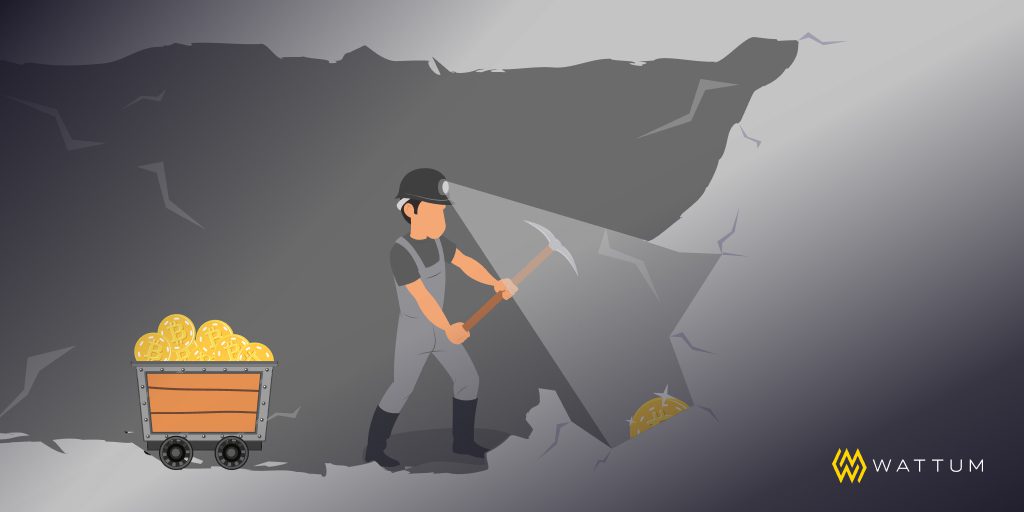Updated on 22/09/22: Despite a limited BTC price recovery thus far, Bitcoin mining difficulty has for the most part steadily increased over the last few months, including four consecutive rises to a new all-time high of 32.045 trillion on September 13. Although this has further squeezed margins, it has also offered evidence that miners around the world are taking advantage of an ideal opportunity to launch or expand their operations. On the whole, the continued increase in mining difficulty provides an indication that the mining community remains bullish on Bitcoin long-term and undeterred by the short-term price movements of BTC, with the Bitcoin network currently as robust and secure as it has ever been.
One promising sign for the Bitcoin network amid the BTC price drop is that mining difficulty has mostly remained as high as ever, an indication that miners across the world are still largely undeterred by the current fluctuations of the market price of Bitcoin. Difficulty hit an all-time high of 31.251 trillion on May 10, the sixth all-time high of 2022, before dropping 4.33% to 29.897 trillion two weeks later, its largest drop in ten months. On June 8, however, difficulty once again rose 1.29% to 30.28 trillion, its second highest level ever. Difficulty fell again by 2.35% to 29.570 trillion on June 22, though, and then by another 1.41% to 29.153 trillion just this past week. In any case, difficulty has decreased only around 6.7% over the past eight weeks, in correlation to around a 30% Bitcoin price drop over the same period.
Perhaps this should come as no surprise. Mining is typically a long play, and arguably the best way to accumulate Bitcoin at (or even far below) today’s price in bullish anticipation of its future price. Depending on the size and specifics of the operation, mining also tends to depend on long-term planning and resource allocation – in other words, long-term thinking. As such, the long-term outlook of miners and the short-term outlook of investors don’t always necessarily align. Thus, while increasing mining difficulty means stiffer competition and thinner margins, it also reveals that many miners remain bullish on Bitcoin over the long haul.
Mining difficulty, which gets adjusted via algorithm every two weeks or so, specifically every 2,016 mined blocks, reflects the overall difficulty entailed in mining a new block – essentially the computing power needed to compete with other miners. It also serves to stabilize block time at around ten minutes: when the average block time for a difficulty epoch is shorter than ten minutes, difficulty increases, and vice versa. Difficulty thus correlates heavily with network hashrate, since block time is itself a function of hashrate. Difficulty increases can place strain on mining operations, but they also increase network security, as the amount of computing power needed for a bad actor to take control of the network also rises. And while difficulty drops equate to network security drops in turn, they also offer positive changes for many existing mining operations, as well as fresh opportunities for new miners to get involved.
Priced Out
One particularly important metric for mining operations is hashprice, which refers not to the cost but to the daily average profit potential per hash calculation, and is typically measured as dollars per terahash per day ($/TH/d). Hashprice is determined by the interplay of two main inputs: mining difficulty, and the price of Bitcoin (which often correspond during bull runs, but indeed have been trending in opposite directions as of late). When a sustained rise in mining difficulty coincides with a sustained drop in the price of Bitcoin, hashprice in turn plunges, which denotes decreased profitability for miners, especially for users of older mining equipment. Just this past week, hashprice fell all the way to $0.078 – its lowest level since October 2020 – before slightly recovering to $0.09 at the time of writing.
When hashprice plummets, as it recently has, this implies that mining has become less profitable or even sustainable for mining operations, and that temporarily powering down might even make fiscal sense in some cases. But we’ve yet to see a corresponding drop in network hashrate or mining difficulty commensurate to that of hashprice, which means that most miners are hanging in there for the time being, buoyed by their belief in Bitcoin.
Strapped In
Throughout Bitcoin’s most recent bull run, mining difficulty has steadily risen on the whole, having hit nineteen all-time highs since March 2020. Indeed, for most of Bitcoin’s history, difficulty has been in an overall perpetual bull run as network hashrate has steadily expanded over time. Mining difficulty did drop suddenly and quite drastically midway through 2021 as a direct result of the mining ban in China, but it then quickly recovered following the rapid migration of mining to various other areas of the world. A data update to the Cambridge Bitcoin Electricity Consumption Index
When Bitcoin mining difficulty dropped 4.33% on May 25 (its largest single drop in nearly a year, and indeed since right after the China ban), this offered a signal to some that the bear market was finally catching up with miners as well, but many independent miners and large mining companies nonetheless appear undeterred. For independent miners, the Bitcoin price drop, though it has drastically lowered hashprice, has also presented fresh opportunities to buy new equipment and grow their operations. Large industrial mining operations, meanwhile, are fulfilling expansion efforts that were planned two years ago or more and are often less influenced than smaller operations by Bitcoin’s short-term price volatility.
Mining Your Business
Did the Bitcoin bull run of the past two-plus years really end? Not if widespread mining activity, as illustrated by network hashrate and mining difficulty levels, provides any indication. For those who still believe in Bitcoin’s long-term potential, the bear market for investors offers an opportune window to secure equipment at a discount and to launch or expand mining operations before the BTC price fully recovers, and, importantly, ahead of the next anticipated halving in early 2024. As such the bull market appears to continue.
Wattum believes in Bitcoin’s long-term potential, and we’re dedicated to helping both experienced miners and beginners ramp up their operations. Now actually makes for the perfect time to buy new mining equipment, as both mining difficulty and the Bitcoin price dictate that miners can’t afford not to raise their hashrate at lower prices. Subscribe to our weekly equipment inventory updates or get in touch with a Wattum sales representative to learn more.



